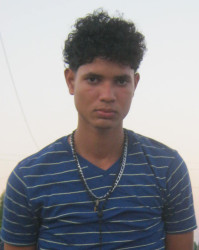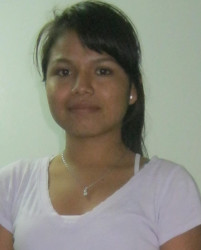Roberto O’ Selmo, 17, St Cuthbert’s Mission’s top Caribbean Secondary Education Certificate (CSEC) student, is now considering leaving the village to better qualify himself to pursue a career in civil engineering.

While a debate continues about whether students are sitting too many subjects at the CSEC examinations, others like O’ Selmo attending the St Cuthbert’s Mission Secondary School are faced with limited choices.
At present, the CSEC subjects offered at St Cuthbert’s Secondary are limited to five: Mathematics, English ‘A,’ Social Studies, Integrated Science, and Physical Education.
Minister of Indigenous People’s Affairs Sydney Allicock, while addressing residents at their annual heritage celebration on September 26, committed to working with the village to attain academic and economic strength.
For some, more options for CSEC students would be a start.
O’ Selmo told Stabroek News that he is now searching for an institution that could facilitate classes for the other subjects he wanted to pursue.
Physics, Chemistry, Biology and Technical Drawing are subjects O’ Selmo always wanted to pursue. He has considered moving to Georgetown to continue his education but he is reluctant due to his mother’s concerns about him moving to the city and living by himself.
He has also thought about attending a private school at Soesdyke, which is closer to his home, but it does not offer all the subjects he wants to study.

Rehanna Daniels, 17, who was a resident of St Cuthbert’s Mission, secured passes in nine of ten subjects she sat at the May/June CSEC examinations as a student of the Institute of Professional Studies (IPE). Daniels, who did personal studies for two of the subjects she sat, moved out of her village when she entered Fourth Form as she felt limited by the few subjects which were offered there.
She has since taken up residence on the East Coast Demerara and she is currently employed at the Giftland Mall as a cashier.
Besides the limited number of subjects being offered at the school, Daniels said, many of the teachers are not qualified. She is hoping that the Ministry of Education will address the situation because it may be impacting negatively on education in the community.
In addition, she also voiced concern over the high percentage of school dropouts in the village, while noting that many brilliant minds are left underdeveloped.
She said the high rate of unemployment and poverty in the village is the cause.
Poverty, Daniels noted, has been a stumbling block for some students who are desirous of pursuing higher education but are unable to afford the cost of transportation to travel in and out of the village.
“I think the authorities really need to do something to target school drop outs in the area… maybe they need to hold seminars to educate the villagers or introduce some activity to the school which will encourage students to want to attend classes, like awarding academic achievement, or some kind of competition which will capture the interest of the children to pursue their education,” Daniels said.
She said there is need for a paradigm shift among some of the people, who do not see any need to improve their education or standard of living.
Daniels believes that those are some of the major issues which should be addressed in building academic strength in the community.
For her, education is priority and she is looking to secure a scholarship to pursue higher education in either journalism, accountancy or economics.
Like Daniels, O’ Selmo raised concerns about the education system in the village. He believes that Information Technology (IT) plays an important role in a student’s life and as a result he thinks it should be among the priority areas for schools in the village.
According to O’ Selmo, the secondary school was recipient of 19 computers but they were shelved because there was no IT teacher.
In an age of computers and internet, O’ Selmo is saddened that students of his community are still not exposed to IT.









